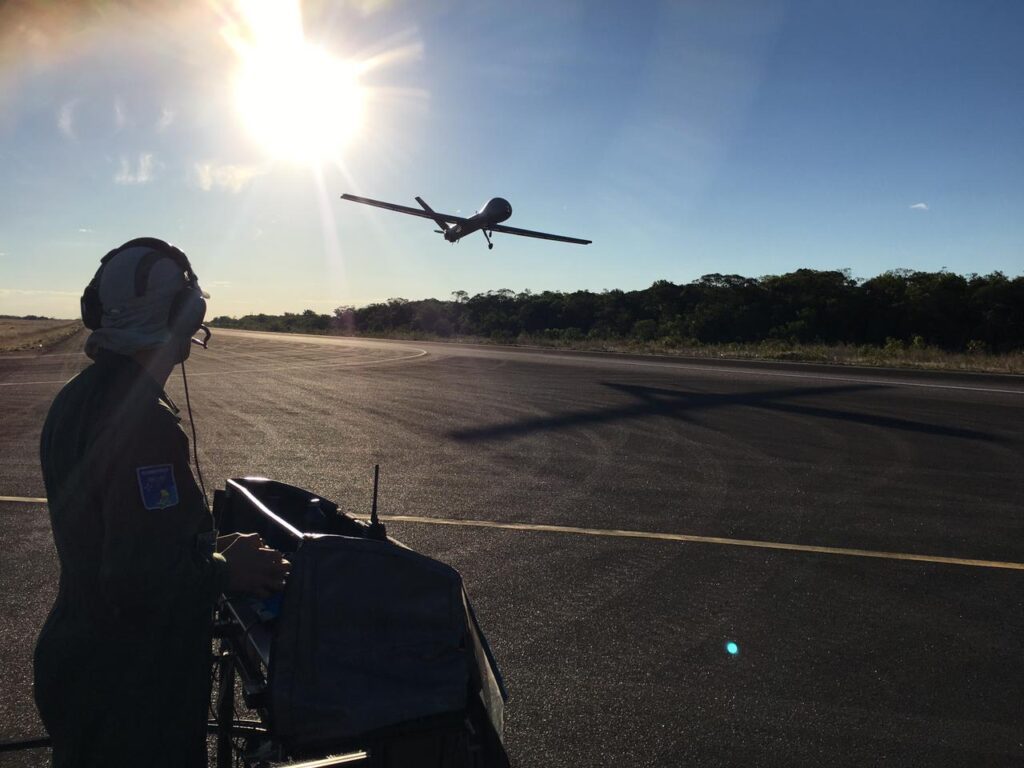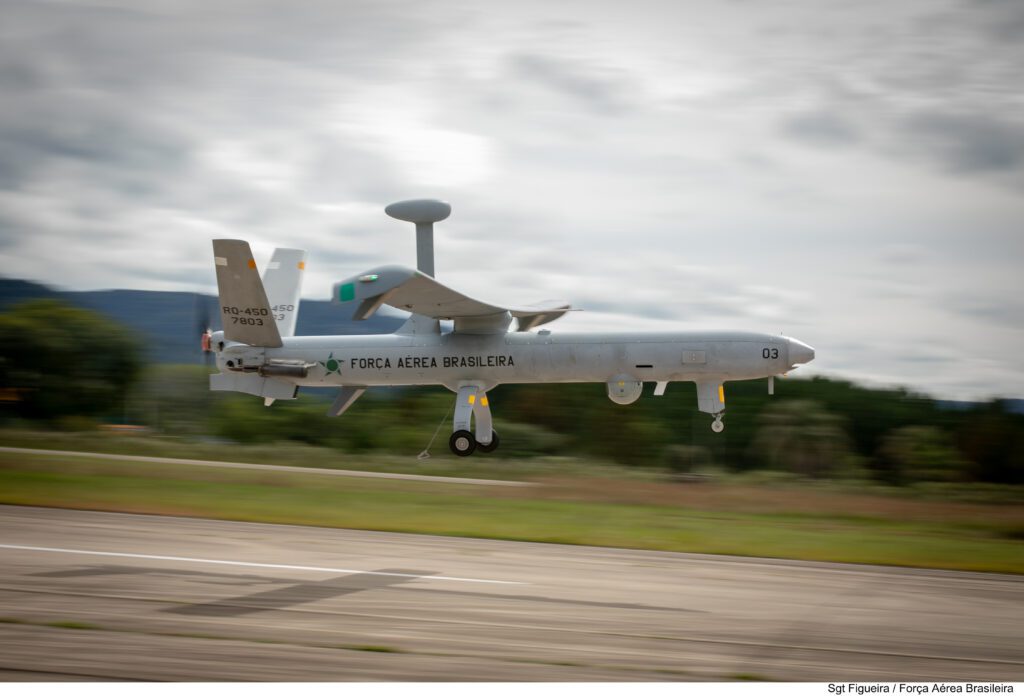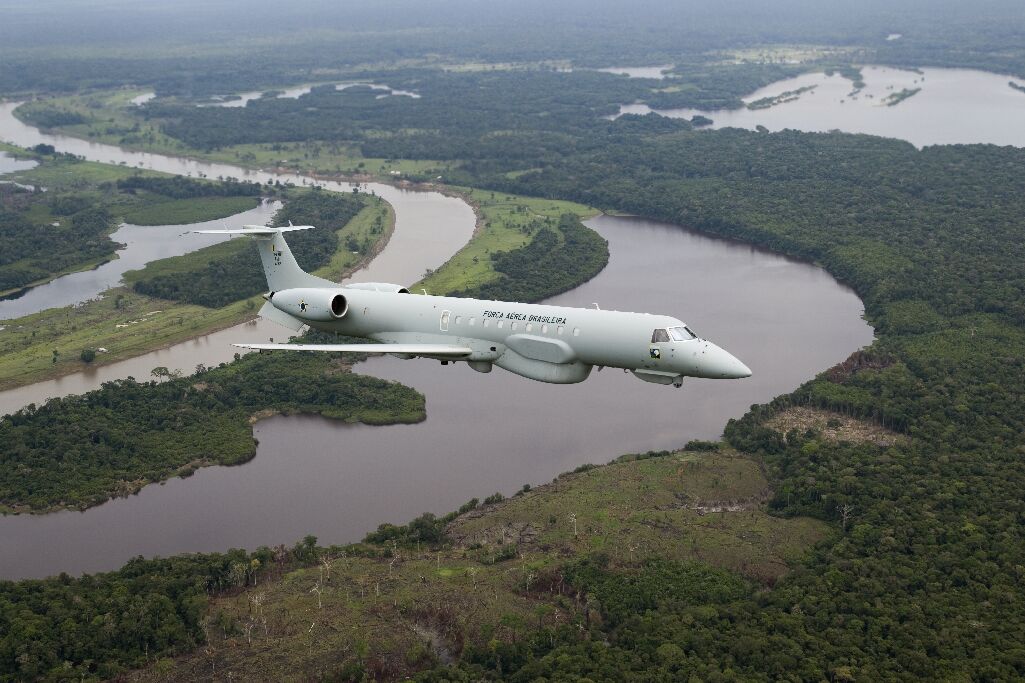Among the actions developed by these Aviation Squadrons are Visual Reconnaissance (VR), Photographic (RP), Meteorological (MR) and Infrared Reconnaissance (IR)
Agência Força Aérea, by Aspirante Eniele Santos and Major Oliveira Lima
In the midst of the Napoleonic and Franco-Prussian wars, balloons were used for aerial reconnaissance. Later, this activity was carried out by fighter and bombing planes, which were adapted and equipped for this purpose. With the Second World War, and during the Cold War, the United States developed several models of aircraft that specifically performed the reconnaissance function, were the U-2 and the SR-71 to deal with the nuclear threat of the Soviet Union.
With the advent of technology, reconnaissance aircraft became even more modern, and with this, remotely piloted aircraft, signals intelligence, monitoring of areas of interest, and tactical reconnaissance were developed with the goal of making air assets faster, more agile and efficient, helping the country to obtain intelligence data.
Reconnaissance in the FAB
In the Brazilian Air Force, reconnaissance missions were born on June 24, 1947, and in November 1952 it performed its first mission with the activation of the First Squadron of the Tenth Aviation Group (1/10th GAV), when the defense machine guns of the A-20 attack aircraft were replaced by cameras.
In this context, in 1965, the Attack and Reconnaissance Squadrons (Esquadrilhas de Reconhecimento e Ataque – ERA) were created and engaged in a wide range of activities, fulfilling a vast program of instruction, in addition to executing real operational missions, such as repression of smuggling, border patrol, photo and visual reconnaissance, bombing of illicit drug crops, and countless other minor actions.
The capture of signals from the electromagnetic spectrum, with the use of high-tech equipment, is another aspect of reconnaissance. The platforms used have digital electro-optical and infrared (IR) sensors with day and night analysis capabilities, in addition to synthetic aperture radars, which allow reconnaissance even when there is cloud cover between the aircraft and the target.

Technological evolution
With this, there was an adaptation to the modern warfare trend of using Remotely Piloted Aircraft Sistem (RPAS), which are also employed in the surveillance of the Brazilian airspace. In a scenario of operational evolution in the Air Force, the IVR, an integrated application of Intelligence, Surveillance and Reconnaissance, emerged, both in peace time and in conflict situations.
Nowadays, the analysis and collection of intelligence data and the monitoring of areas of interest are some of the activities performed by FAB’s Reconnaissance Aviation squadrons: the First Squadron of the Tenth Aviation Group (1/10th GAV) – Poker Squadron; the Second Squadron of the Sixth Aviation Group ( 2/6th GAV) – Guardian Squadron; the First Squadron of the Twelfth Aviation Group (1/12th GAV) – Horus Squadron; and the First Squadron of the Seventh Aviation Group (1/7th – GAV) – Orungan Squadron.
The E-99 aircraft are employed in Control and Alarm missions in flight; the R-99 and RA-1, as well as the RQ-450, RQ-900 and RQ-1150 Remotely Piloted Aircraft System (RPAS) perform several Air Reconnaissance missions. However, it is noteworthy that the ARP also excel in surveillance activities, especially in Joint Operations.
The Poker Squadron has been performing specific reconnaissance missions since 1952 and is currently equipped with the RA-1. Besides tactical reconnaissance, it carries out visual, photographic, meteorological and strategic reconnaissance.

Protecting the Northern Region
The Guardian Squadron, the spearhead of the Amazon Surveillance System (SIVAM), is responsible for monitoring and protecting the Legal Amazon, as well as for planning and carrying out Flight Control and Alarm actions, and Aerial Reconnaissance. In this context, the R-99 has participated in several Air Force Actions, such as the Joint Exercise TAPIO and Operations FORMOSA, SAMAÚNA, BRASIL and AGATA.
On its turn, the Horus Squadron employs Remotely Piloted Aircraft System (RPAS) within the Brazilian Air Force (FAB), a new technology that still presents ample room for development. The acquisition of these RPAS brought new perspectives and capabilities to the Reconnaissance Aviation.
Since then, the Squadron has been used in several missions, especially Operation Verde Brasil (Brazil Green) (2020/2021), in which the 1st/12th GAV reached the mark of 656 hours and 50 minutes of flight time with the RQ-450 and RQ-900 Remotely Piloted Aircraft System, operating from Cachimbo (PA).
Since the implementation of the IVR task in FAB, the Reconnaissance Aviation has received special attention, in order to update its doctrines, aiming to adapt to the new missions and expectations of the Air Force. In this sense, the First Squadron of the Seventh Aviation Group (1º/7º – GAV) – Orungan Squadron, recently began operations with the RQ-1150 Heron I, in Santa Cruz (RJ).
Video pays tribute to the Day of the Reconnaissance Aviation
(audio in portuguese)
In the Brazilian Air Force (FAB), reconnaissance missions were born on June 24, 1947. For 75 years, military personnel have been analyzing and collecting intelligence data and monitoring areas of interest.
Fotos: Esquadrão Guardião / Esquadrão Hórus / Sargento Figueira (CECOMSAER) *** Translated by DEFCONPress Team ***
